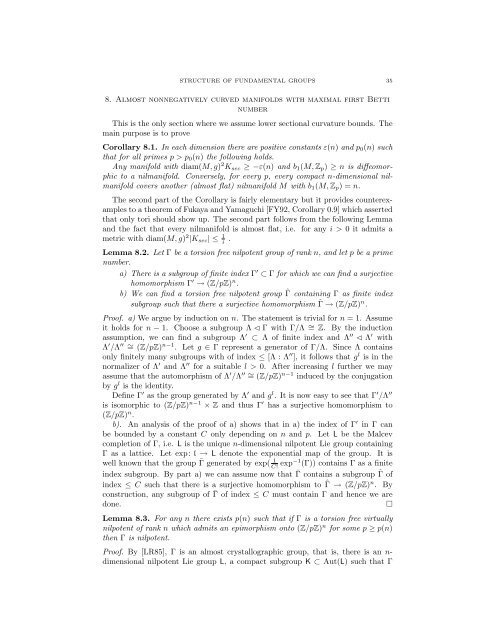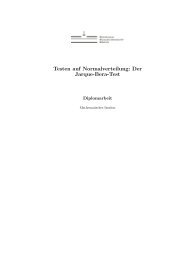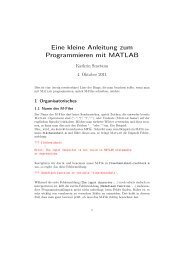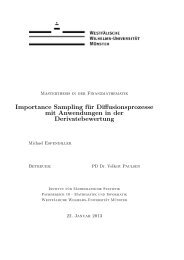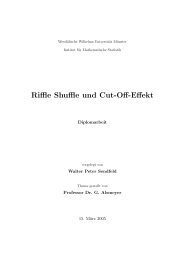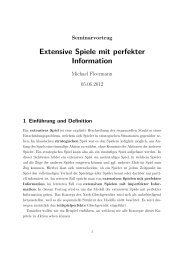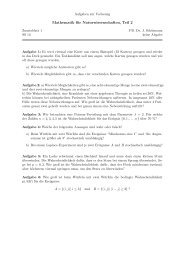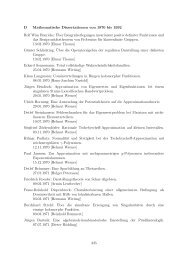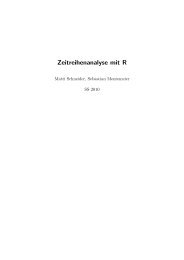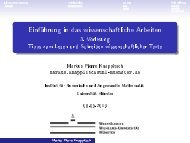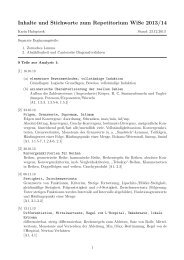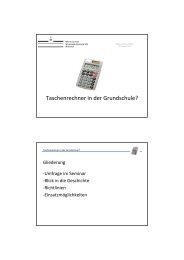Margulis Lemma
Margulis Lemma
Margulis Lemma
Create successful ePaper yourself
Turn your PDF publications into a flip-book with our unique Google optimized e-Paper software.
STRUCTURE OF FUNDAMENTAL GROUPS 35<br />
8. Almost nonnegatively curved manifolds with maximal first Betti<br />
number<br />
This is the only section where we assume lower sectional curvature bounds. The<br />
main purpose is to prove<br />
Corollary 8.1. In each dimension there are positive constants ε(n) and p 0 (n) such<br />
that for all primes p > p 0 (n) the following holds.<br />
Any manifold with diam(M, g) 2 K sec ≥ −ε(n) and b 1 (M, Z p ) ≥ n is diffeomorphic<br />
to a nilmanifold. Conversely, for every p, every compact n-dimensional nilmanifold<br />
covers another (almost flat) nilmanifold M with b 1 (M, Z p ) = n.<br />
The second part of the Corollary is fairly elementary but it provides counterexamples<br />
to a theorem of Fukaya and Yamaguchi [FY92, Corollary 0.9] which asserted<br />
that only tori should show up. The second part follows from the following <strong>Lemma</strong><br />
and the fact that every nilmanifold is almost flat, i.e. for any i > 0 it admits a<br />
metric with diam(M, g) 2 |K sec | ≤ 1 i .<br />
<strong>Lemma</strong> 8.2. Let Γ be a torsion free nilpotent group of rank n, and let p be a prime<br />
number.<br />
a) There is a subgroup of finite index Γ ′ ⊂ Γ for which we can find a surjective<br />
homomorphism Γ ′ → (Z/pZ) n .<br />
b) We can find a torsion free nilpotent group ˆΓ containing Γ as finite index<br />
subgroup such that there a surjective homomorphism ˆΓ → (Z/pZ) n .<br />
Proof. a) We argue by induction on n. The statement is trivial for n = 1. Assume<br />
it holds for n − 1. Choose a subgroup Λ ⊳ Γ with Γ/Λ ∼ = Z. By the induction<br />
assumption, we can find a subgroup Λ ′ ⊂ Λ of finite index and Λ ′′ ⊳ Λ ′ with<br />
Λ ′ /Λ ′′ ∼ = (Z/pZ) n−1 . Let g ∈ Γ represent a generator of Γ/Λ. Since Λ contains<br />
only finitely many subgroups with of index ≤ [Λ : Λ ′′ ], it follows that g l is in the<br />
normalizer of Λ ′ and Λ ′′ for a suitable l > 0. After increasing l further we may<br />
assume that the automorphism of Λ ′ /Λ ′′ ∼ = (Z/pZ) n−1 induced by the conjugation<br />
by g l is the identity.<br />
Define Γ ′ as the group generated by Λ ′ and g l . It is now easy to see that Γ ′ /Λ ′′<br />
is isomorphic to (Z/pZ) n−1 × Z and thus Γ ′ has a surjective homomorphism to<br />
(Z/pZ) n .<br />
b). An analysis of the proof of a) shows that in a) the index of Γ ′ in Γ can<br />
be bounded by a constant C only depending on n and p. Let L be the Malcev<br />
completion of Γ, i.e. L is the unique n-dimensional nilpotent Lie group containing<br />
Γ as a lattice. Let exp: l → L denote the exponential map of the group. It is<br />
well known that the group ¯Γ generated by exp( 1 C! exp−1 (Γ)) contains Γ as a finite<br />
index subgroup. By part a) we can assume now that ¯Γ contains a subgroup ˆΓ of<br />
index ≤ C such that there is a surjective homomorphism to ˆΓ → (Z/pZ) n . By<br />
construction, any subgroup of ¯Γ of index ≤ C must contain Γ and hence we are<br />
done.<br />
□<br />
<strong>Lemma</strong> 8.3. For any n there exists p(n) such that if Γ is a torsion free virtually<br />
nilpotent of rank n which admits an epimorphism onto (Z/pZ) n for some p ≥ p(n)<br />
then Γ is nilpotent.<br />
Proof. By [LR85], Γ is an almost crystallographic group, that is, there is an n-<br />
dimensional nilpotent Lie group L, a compact subgroup K ⊂ Aut(L) such that Γ


